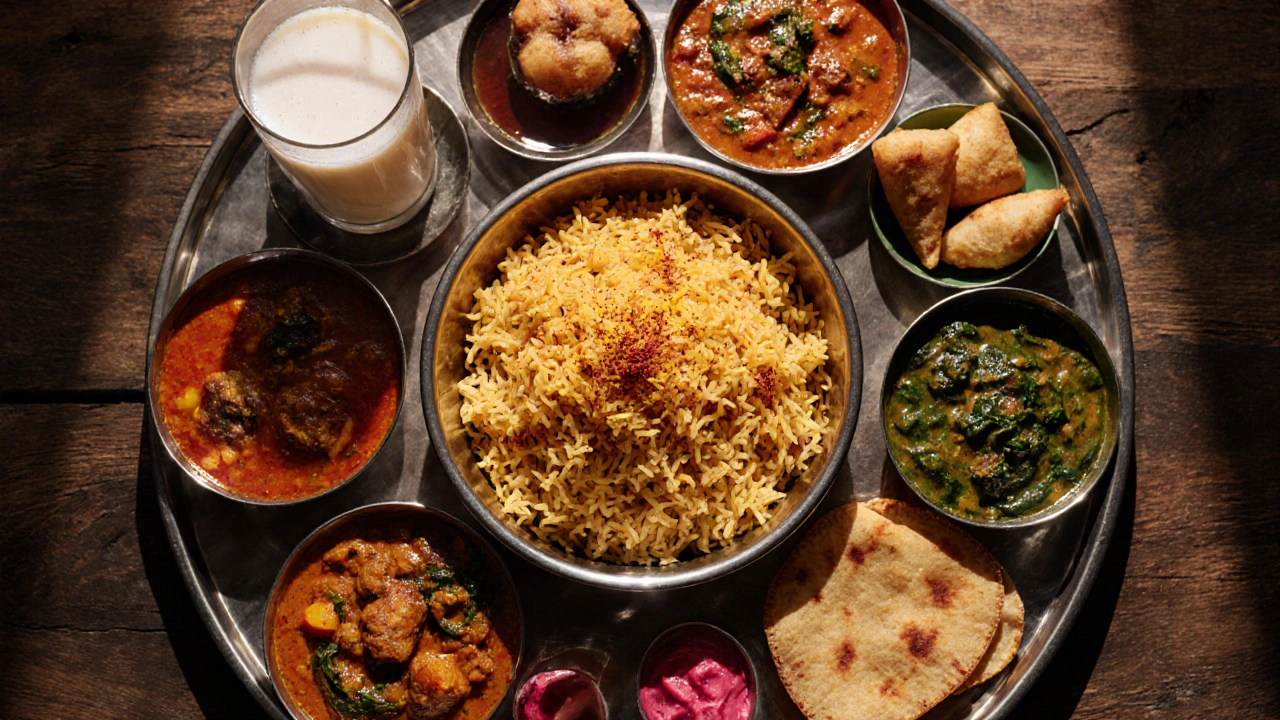Classic Indian Dish – Flavor, History, and Kitchen Tips
When exploring classic Indian dish, a time‑tested preparation that showcases regional spices and techniques. Also known as traditional Indian recipe, it brings together flavors that define Indian cuisine. Iconic examples include biryani, a layered rice and meat or vegetable masterpiece cooked with aromatic spices, curry, a sauce‑based dish built on a base of onions, tomatoes, and a blend of spices, roti, a whole‑wheat flatbread that puffs when cooked on a hot griddle, and dal, a simmered lentil stew prized for its protein and comforting texture. These dishes together form the backbone of what we call a classic Indian dish.
What Makes a Classic Indian Dish Tick
At its core, a classic Indian dish requires three things: a spice blend, a cooking technique, and a regional story. The spice blend—often called masala—is the attribute that defines flavor. For biryani, the key values are Basmati rice, saffron, and whole spices like cardamom and cloves; the masala creates layered aroma and color. Curry’s signature attribute is its base sauce, where ginger‑garlic paste and tomatoes combine with turmeric, cumin, and coriander to give depth. Roti’s crucial attribute is dough moisture; adding a pinch of oil or baking soda changes texture, making the bread soft and puffed. Dal’s defining attribute is the type of lentil—red lentils, split peas, or black gram—each offering a distinct protein level and cooking time. These attributes connect through practical skills. Mastering the art of tempering spices ("tadka") influences biryani’s fragrance and curry’s richness. Proper dough handling determines whether roti puffs or stays flat. Soaking dal reduces cooking time and improves digestibility, a step that showcases the science behind classic Indian dishes. Together, the entities form a network: biryani influences the way we think about rice dishes, curry influences spice layering, roti influences how we scoop sauces, and dal influences protein balance in meals. If you’re curious about the health angle, consider dal’s nutrition facts: about 9 g of protein per 100 g and low fat, making it a staple for vegetarian meals. Biryani, while indulgent, can be lightened by using brown rice and extra veggies. Curry can swing from creamy (adding yogurt or coconut milk) to lean (using tomato‑puree bases). Roti, when made with whole wheat, adds fiber that supports digestion. These value‑driven choices let you adapt any classic Indian dish to your dietary goals without losing authenticity.
Below you’ll find a curated list of articles that dive deeper into each of these staples—tips on making biryani fluffy, tricks for perfect roti puff, the science behind dal soaking, and the secrets to a silky curry. Whether you’re a beginner looking for step‑by‑step guidance or an experienced cook hunting for nuanced tweaks, the collection ahead offers practical insights that you can try right away in your kitchen.

Classic Indian Dishes Explained: Definition, Top Examples & Regional Guide
Explore what makes a dish a classic Indian dish, discover top examples like Biryani, Masala Dosa and Butter Chicken, and learn how regional origins shape India's iconic meals.